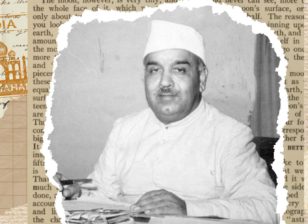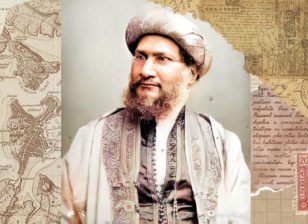Pir Muhammad Munis: The Indian Muslim Journalist Who Defied the British Empire
Satyagraha or nonviolent resistance movement, a quiet storm had already been brewing in the heart of Bihar. It wasn’t ignited by a political leader or a wealthy landlord, but by a schoolteacher with no wealth, no title, only an unyielding pen and an unshakable will. His name was Pir Muhammad Munis.
While Mahatma Gandhi is widely credited with launching the first Satyagraha movement in 1917 in Champaran, Bihar, it was Munis who laid the intellectual and emotional groundwork for resistance in Champaran. Through fearless journalism, revolutionary writings, and relentless advocacy for oppressed farmers, Munis became a thorn in the side of the British Empire. They branded him a “dangerous man,” and a “terrorist with a pen.” But to the people of Champaran, he was a prophet of truth, and to Gandhi himself, an indispensable ally.
This is not just the story of a forgotten revolutionary. It is the story of how a man with no army, no resources, and no political power helped light the fire of freedom — using nothing but ink, paper, and unbreakable courage.
Early Life and Rise as a Revolutionary
Born on 30 May 1882 in Bettiah, West Champaran, Munis chose the path of resistance early in life. Through bold writings and public engagement, he mobilized locals and shook the colonial establishment. The British knew his influence. In a letter dated 12 September 1917, C.M. Marsham, the Superintendent of Police in Champaran, wrote:
“Pir Muhammad of Bettiah is a man of no position, and no means, a dangerous man, is practically a badmash.”
The Spark Before the Gandhi
In 1917, Mahatma Gandhi arrived in Champaran, Bihar, to begin his first Satyagraha, a watershed moment in India’s independence movement. But the spirit of resistance had already taken root, thanks to a fearless local voice: Pir Muhammad Munis. Long before Gandhi’s arrival, Munis had devoted himself to fighting British colonial rule and advocating for communal harmony, especially between Hindus and Muslims.
A Revolutionary Journalist
Pir Muhammad Munis was not just a freedom fighter. He was a journalist, thinker, teacher, and a defender of marginalized farmers. His mission: to amplify the struggles of the oppressed, expose colonial atrocities, and strengthen Hindu-Muslim unity. His journalism wasn’t mere reporting, it was an act of rebellion that catalyzed social consciousness.
The British colonial regime labeled him a “badmash patrakar” (rogue journalist) and a “terrorist with a pen.” His articles in Pratap newspaper exposed the brutal exploitation of indigo farmers in Champaran. For his activism, he was imprisoned, dismissed from his teaching job, and had his property seized. His powerful book, Champaran Ki Praja Par Atyachar (Atrocities on the People of Champaran) was also banned.
Recognized as Gandhi’s Key Ally
When Gandhi came to Champaran, Munis stood by him every step of the way. He was listed tenth in a British intelligence list of 32 people who helped Gandhi, the first among those from Champaran. Another British official, W.H. Lewis, described him as: “The most important person in assisting Gandhi.”
On 22 April 1917, Gandhi arrived in Bettiah and went directly to Munis’s home, where he was welcomed with open arms and public support.
The Pen That Brought Gandhi to Champaran
British intelligence later acknowledged that it was Munis’s revolutionary writings that led Gandhi to Champaran. One report stated: “Pir Muhammad Munis is a dangerous and hoodlum journalist who, through his questionable literature, highlighted the sufferings of Champaran and influenced Mr. Gandhi to visit.”
Mentor in Language and Ally in Struggle
Munis didn’t just support Gandhi politically, he was instrumental in helping him linguistically. Gandhi, fluent only in Gujarati and English at the time, learned Hindi in Champaran, thanks to Munis’s encouragement. He also served as Gandhi’s guide and interpreter during key moments of the movement
He was a prolific writer on global politics. His book “America ki Azaadi ka Itihas” (History of America’s Independence) inspired revolutionaries like Ram Prasad Bismil, who published it in 1918 using borrowed money. The book was banned by British authorities just months later, and multiple freedom fighters were charged for its distribution.
Final Years in Obscurity
In February 1921, British officials spread a false rumor that Munis had died. Pratap newspaper published an obituary. But the very next day, Munis shocked everyone by publishing an article in the same paper, stating — “I am alive.”
Despite his immense service, Munis lived and died in poverty. He passed away on 23 September 1949, largely forgotten by the nation he fought so hard to liberate. His legacy, however, remains that of a fearless truth-teller, revolutionary journalist, and unsung hero of India’s independence.




